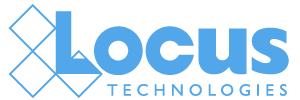Why Locus
Locus is built for the most complex environmental data on earth
Locus is the only EHS software company that manages air, water, soil, energy, emissions, waste, site, and incident data alongside scientist-grade mapping, compliance, and reporting tools – all within a configurable framework.
It’s easy to get data in and out of Locus, making siloes and fragmented-reports things of the past. That’s why governments, utilities, and some of the largest oil and gas, chemical, manufacturing, utilities, construction, and pharma companies choose Locus to ensure accuracy and credibility in their work.
This page outlines several other ways Locus generates long-term value for clients and achieves a 98% client renewal rate year after year.
347,675
EDDs Loaded
12,860,332
Logins
449,022,927
Records
1,577,266
Worldwide Locations
3,645,390+
Global PFAS Records
Incredible in-house talent
Dorian has a master’s in environmental science, is accredited as a Certified Hazardous Materials Manager (CHMM), and is a credentialed Envision Sustainability Professional. Prior to joining Locus, she helped shape the clean construction initiatives for one of the most prolific construction regions in the country. Her unique expertise in environmental chemistry and materials-testing influences her work quantifying and mitigating the environmental impacts of construction. She revels in data-driven solutions – like calculating the embodied carbon of concrete used in specialized concrete mixes designed for runways withstanding the force of commercial aircraft.”
Meet our other in-house scientists who help guide Locus product development and lead our customer success teams.
Did you know?
Every R&D and client-facing employee has professional EHS experience and/or advanced degrees in various engineering, chemistry, geology, and biology specialties. (We get it. Experience matters.)


